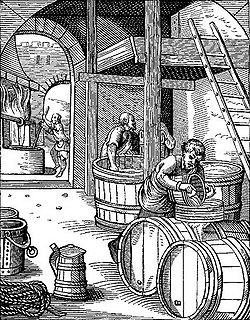Liqueur
A liqueur is an alcoholic beverage that has been flavored with fruit, herbs, nuts, spices, flowers, or cream and bottled with added sugar. Liqueurs are typically quite sweet; they are usually not aged for long but may have resting periods during their production to allow flavors to marry.
The distinction between liqueurs and spirits is not simple because many spirits (e.g., flavored vodka) are available today in a flavored form. The most reliable guide to classification is that liqueurs contain added sugar, but spirits do not.
Most liqueurs have a lower alcohol content (15%-30% ABV) than spirits, but some contain as much as 55% ABV. Dessert wines may taste like a liqueur but they contain no added flavoring.
A distinction can be made between liqueurs and the kind of cordials that are made with fruit juice. In some parts of the world, people use the words "cordial" and "liqueur" interchangeably.
Liqueurs date back centuries and are historical descendants of herbal medicines, often those prepared by monks, as Chartreuse or Bénédictine. Liqueurs were made in Italy as early as the 13th century and their consumption was later required at all treaty signings during the Middle Ages.[1]
Nowadays, liqueurs are made worldwide and are served in many ways: by themselves, poured over ice, with coffee, mixed with cream or other mixers to create cocktails, etc. They are often served with or after a dessert. Liqueurs are also used in cooking.
Some liqueurs are prepared by infusing certain woods, fruits, or flowers, in either water or alcohol, and adding sugar or other items. Others are distilled from aromatic or flavoring agents. Anise liqueurs have the interesting property of turning from transparent to cloudy when added to water: the oil of anise remains in solution in the presence of a high concentration of alcohol, but crystallizes when the alcohol concentration is reduced.
Layered drinks are made by floating different-coloured liqueurs in separate layers. Each liqueur is poured slowly into a glass over the back of a spoon or down a glass rod, so that the liquids of different densities remain unmixed, creating a striped effect.
The word liqueur comes from the Latin liquifacere ("to liquefy").

See also
- List of liqueurs
- Cordial
- Cream liqueur
- Crème liqueur
- Dessert wine
- Nalewka
- Sloe gin
References
External links
|
|||||||||||||||||||||||||||||||||||||||||||||||||||||||||||||



